
Fort Myers' New Continuous Flow Intersection
Located at the intersection of I-44 and U.S. Route 13 in Springfield, MO, this is the first diverging diamond interchange constructed in the United States. This design is one of several alternatives to conventional geometries that FHWA is encouraging States to adopt.
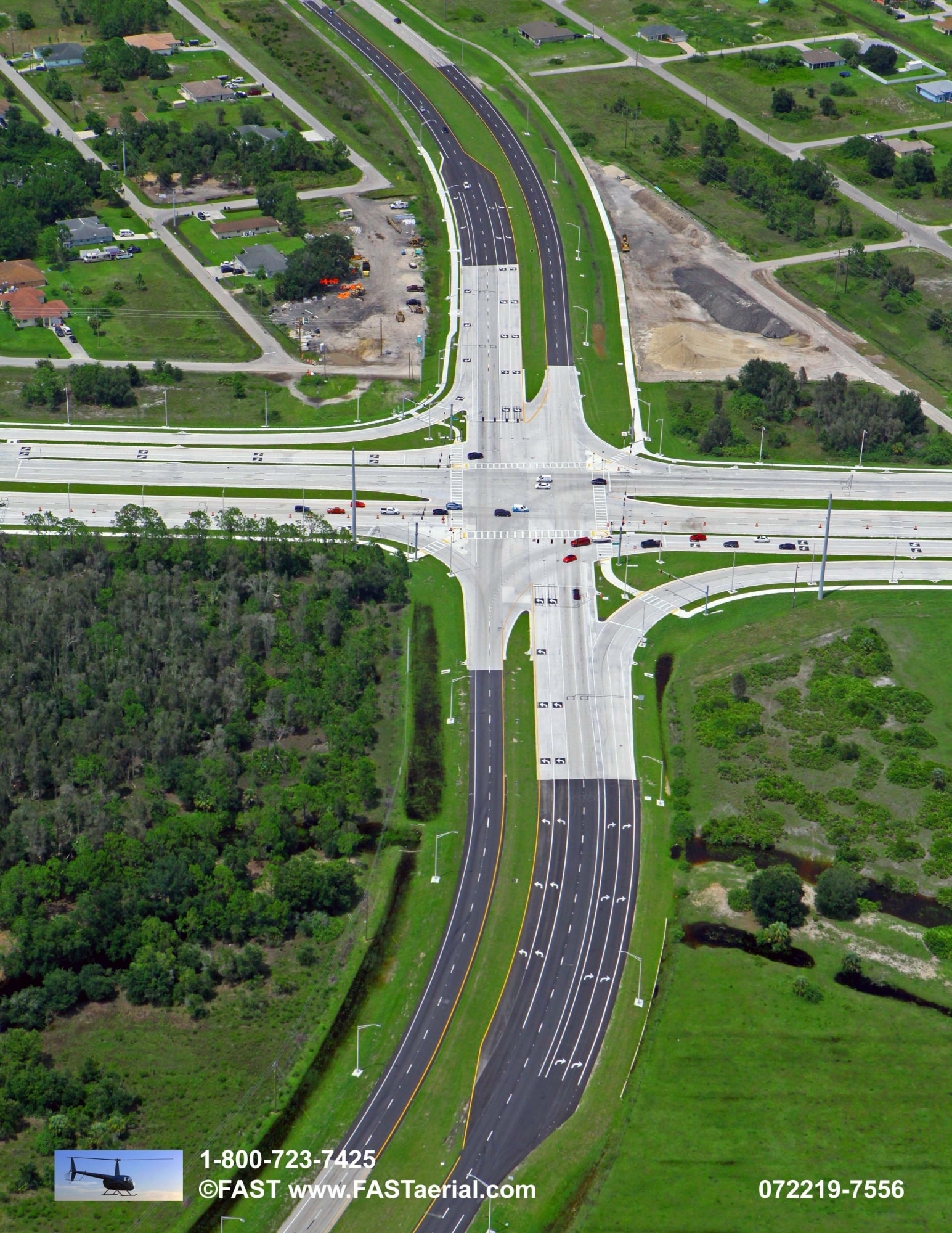
SR 82 Continuous Flow Intersection Completed FL Paving Project
1 Altmetric Metrics Abstract Today, our community is facing a growing numbers of transportation challenges, as traffic grows and congestion worsens for signalized intersections. Based on that its needed balances solutions that improve safety and keep mobility for users with minimum travel time.

Florida's first continuous flow intersection coming to Daniels Parkway
The DLT intersection, also known as a continuous flow intersection (CFI), eliminates potential conflicts between left-turning vehicles and oncoming traffic by adding a left-turn bay to the left of oncoming traffic prior to the main intersection. Vehicles access the left-turn bay upstream of the main signalized intersection and cross over the.
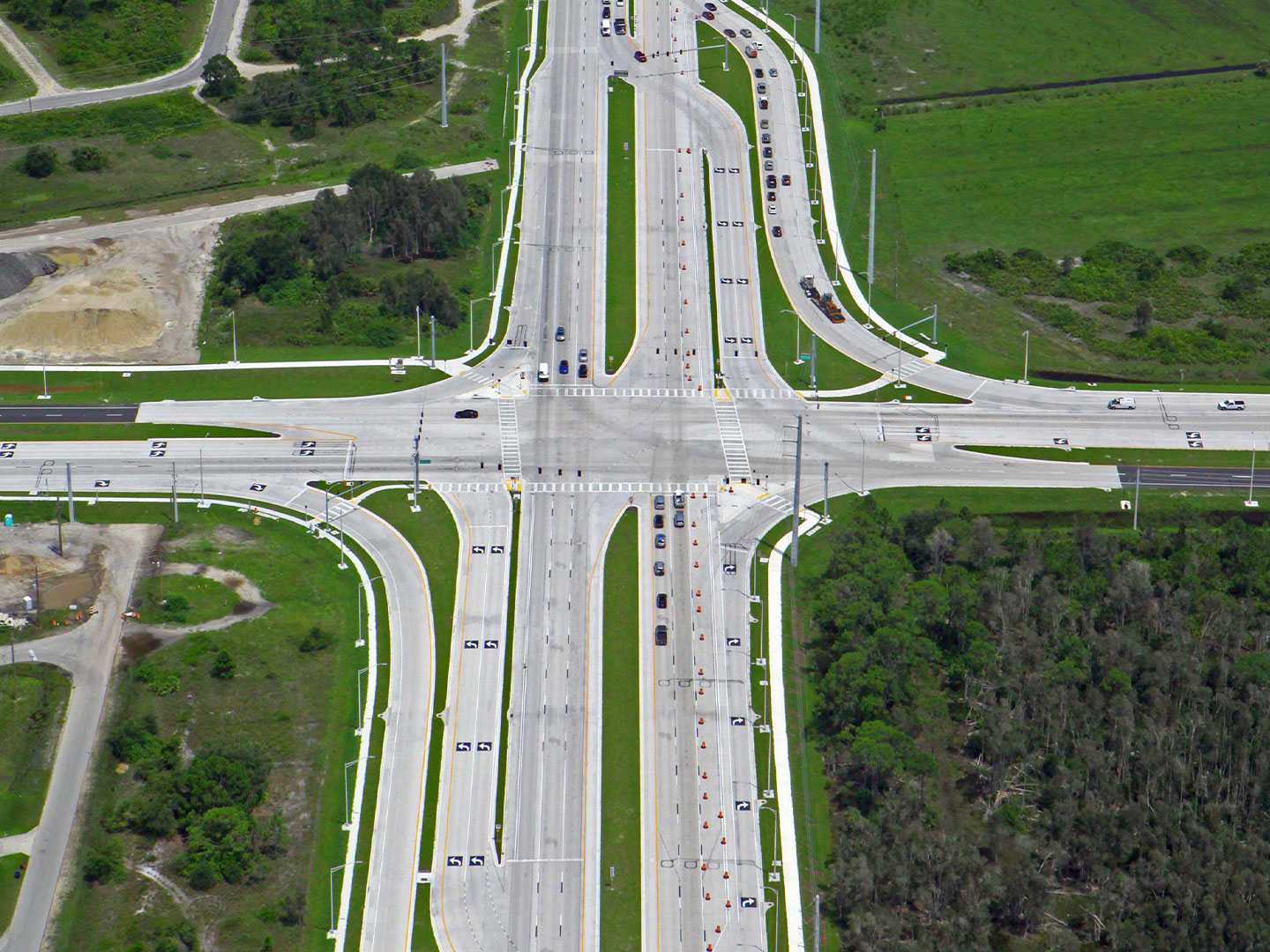
Florida’s First Continuous Flow Intersection Opens Near Fort Myers
The Continuous Flow Intersection (CFI) displaces the left turns from the main intersection approach using an additional upstream crossover, allowing the left turns to run concurrently with the.

ContinuousFlow Intersections are Coming to Hoddle Street
Intersection safety and design research has led to the development and successful deployment of innovative intersection and interchange designs, including the modern roundabout, mini-roundabout, continuous flow intersections, restricted crossing U-turn intersections, and diverging diamond interchanges.
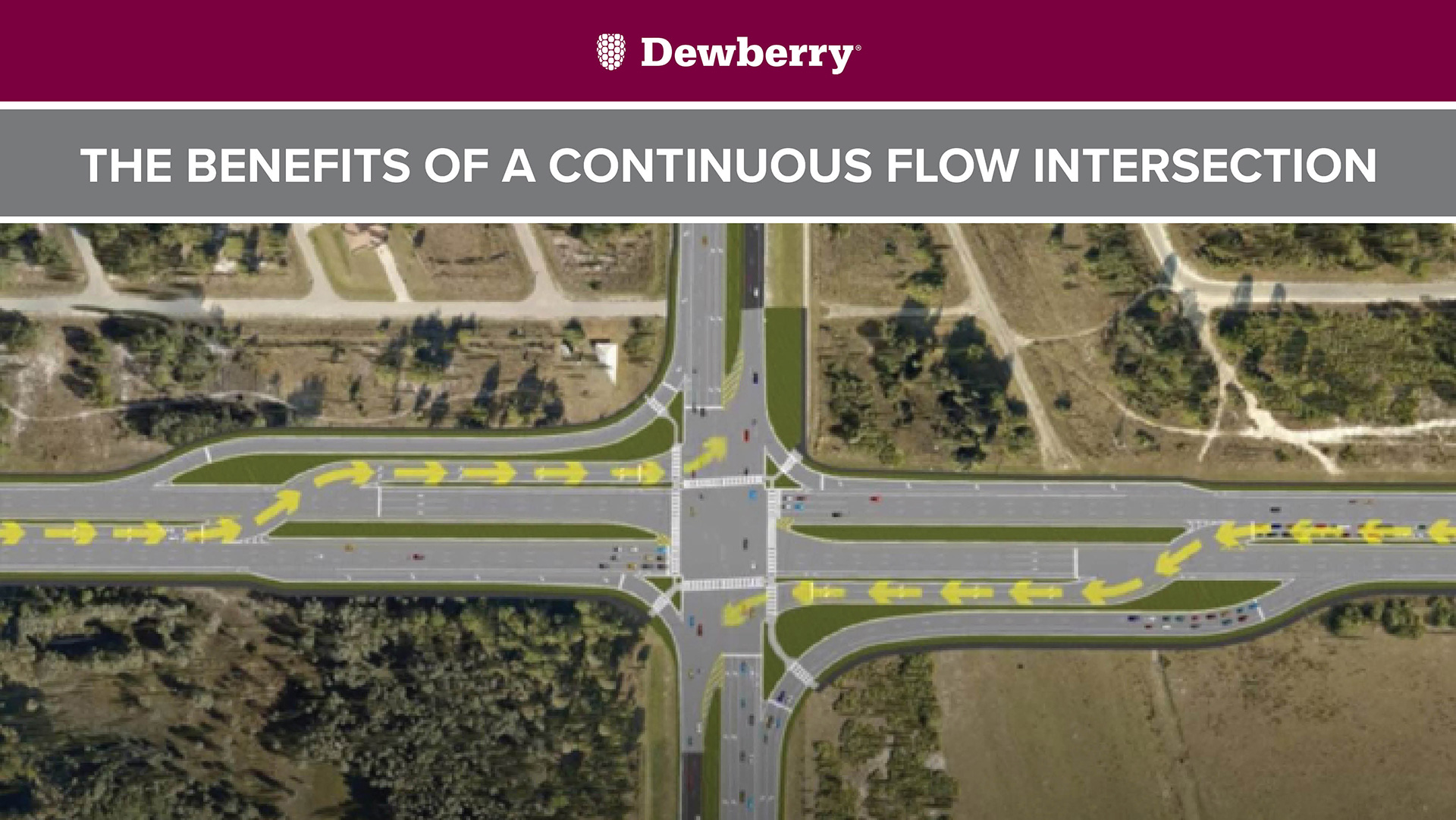
The Benefits of a Continuous Flow Intersection
A Continuous Flow Intersection (CFI) is an effective design solution to improving traffic safety and flow at high-volume, conventional intersections. It alters the way vehicles turn left on the main road by diverting left-turning traffic into crossover lanes ahead of the main intersection. A CFI shifts left-turning traffic to the outside edges.

Alternative Road Design Here's How a Continuous Flow Intersection
To alleviate traffic congestion via better traffic flow, the authors propose the use of continuous flow intersections (CFI). The CFI design allows left-turning vehicles to load a left-turn bay that is placed to the left of oncoming traffic and that is accessed by the creation of a midblock, signalized intersection.

New continuous flow intersection opening May 19 at Beechmont, Five Mile
Signalized Intersections: Informational Guide (FHWA-HRT-04-091) provides information and tools that can help traffic engineers, project managers, and other transportation professionals conduct insightful assessments of intersections and understand the tradeoffs from potential improvement measures.

Continuous flow intersection (CFI) [2]. Download Scientific Diagram
Continuous Flow Intersection The availability of evaluation studies for continuous flow intersections (CFIs) (also known as displaced left turns, or DLTs) in the United States is limited. Many of the existing operational studies relate to the development of models or procedures. Several studies developed optimiza- tion models for CFI elements.
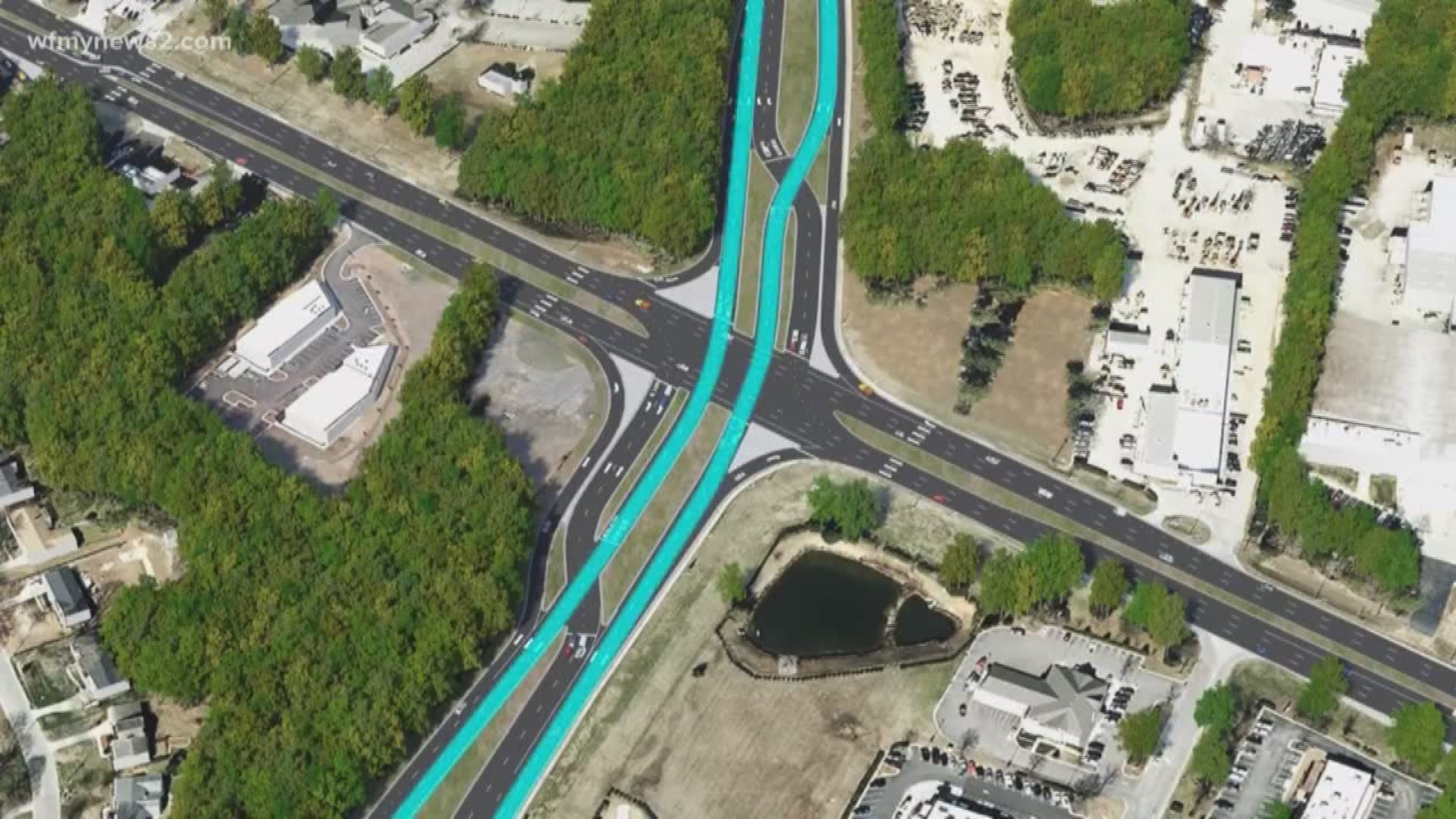
What is a Continuous Flow Intersection? Why Is It In Charlotte
The continuous flow intersection [CFI) is an unconventional intersection design which has been used in many cities all over the world. However, as an important parameter for the geo-metric design, signal timing, and operation evaluation, the saturation flow rate at CFI has not been carefully examined.
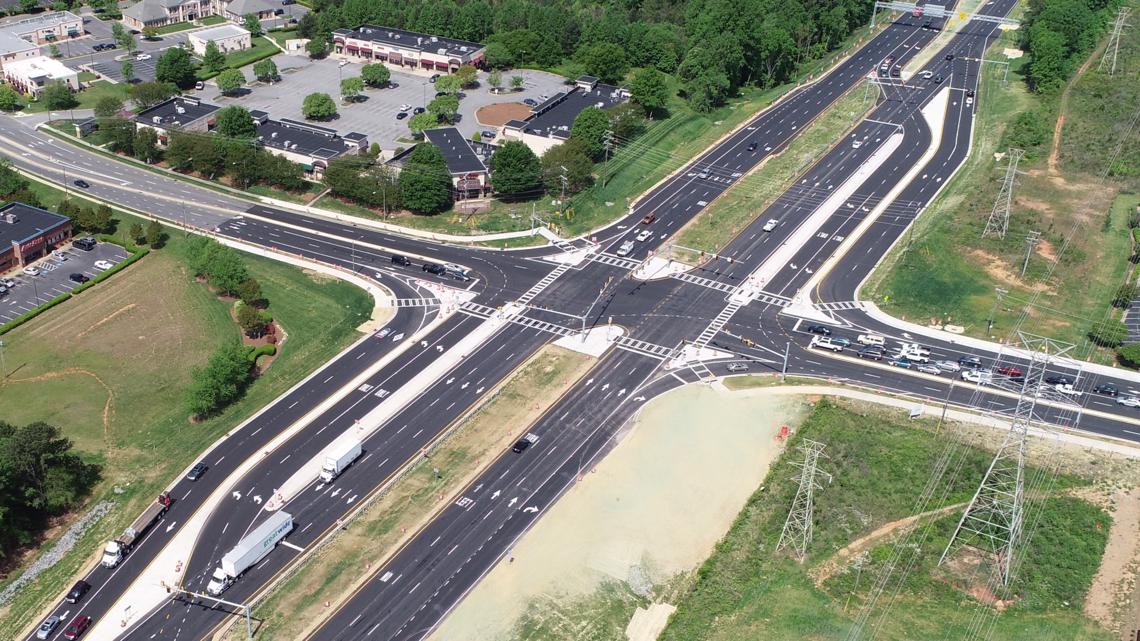
New continuous flow intersection in Charlotte wins national award
A continuous flow intersection (CFI) , or displaced left-turn (DLT) intersection, removes the left-turning vehicles from the main intersection and directs them to a separate roadway running parallel to the main lanes. This design allows more green time for the major traffic flows.
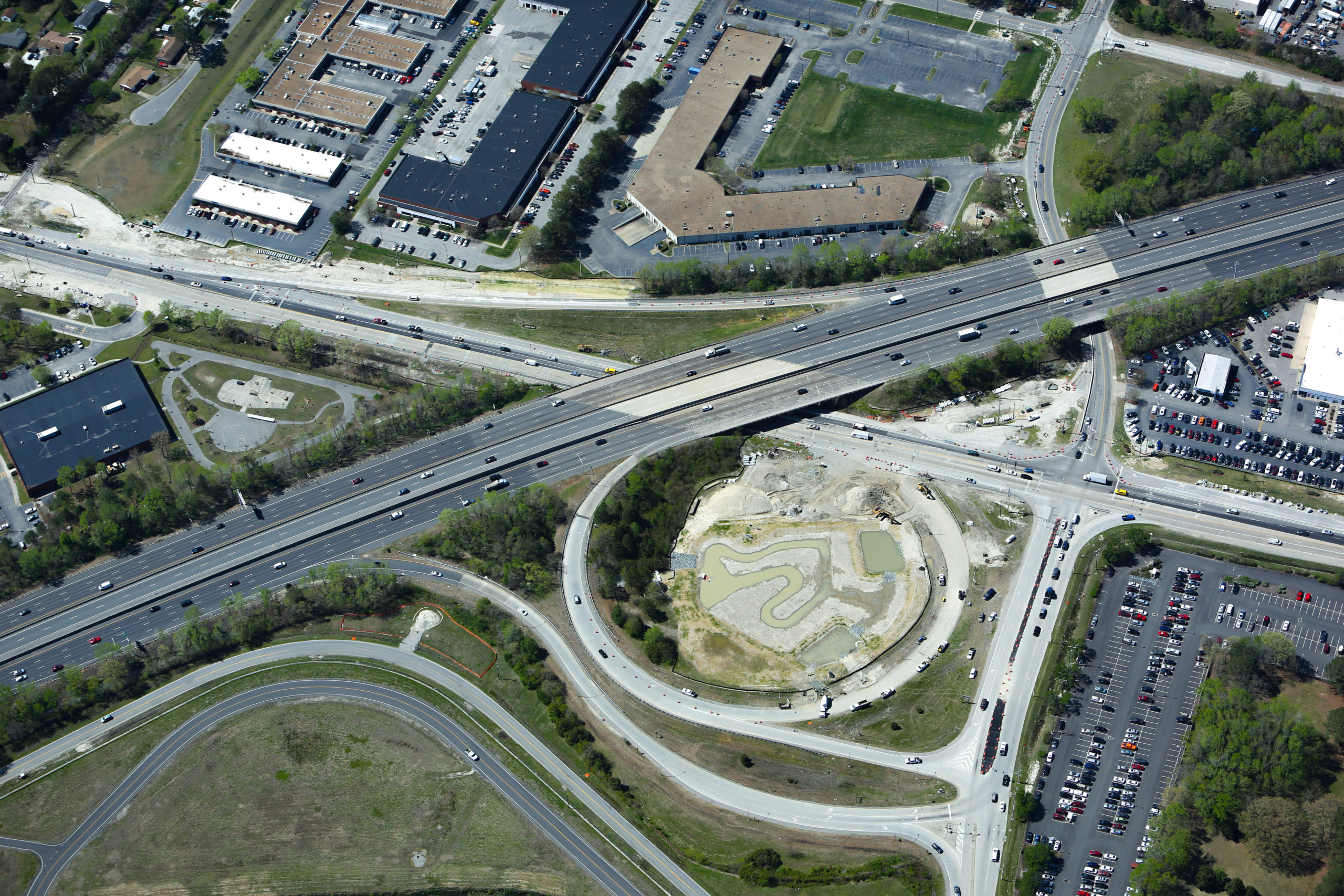
Military Highway Continuous Flow Intersection Branch Civil
Continuous flow intersections (CFIs), also referred to as displaced left-turn inter sections, use an unconventional lane arrangement to maximize the vehicular throughput. This arrangement involves displacing left-turn lanes across opposing through traffic before reaching the main intersection. Such an alteration allows left-turning and through.
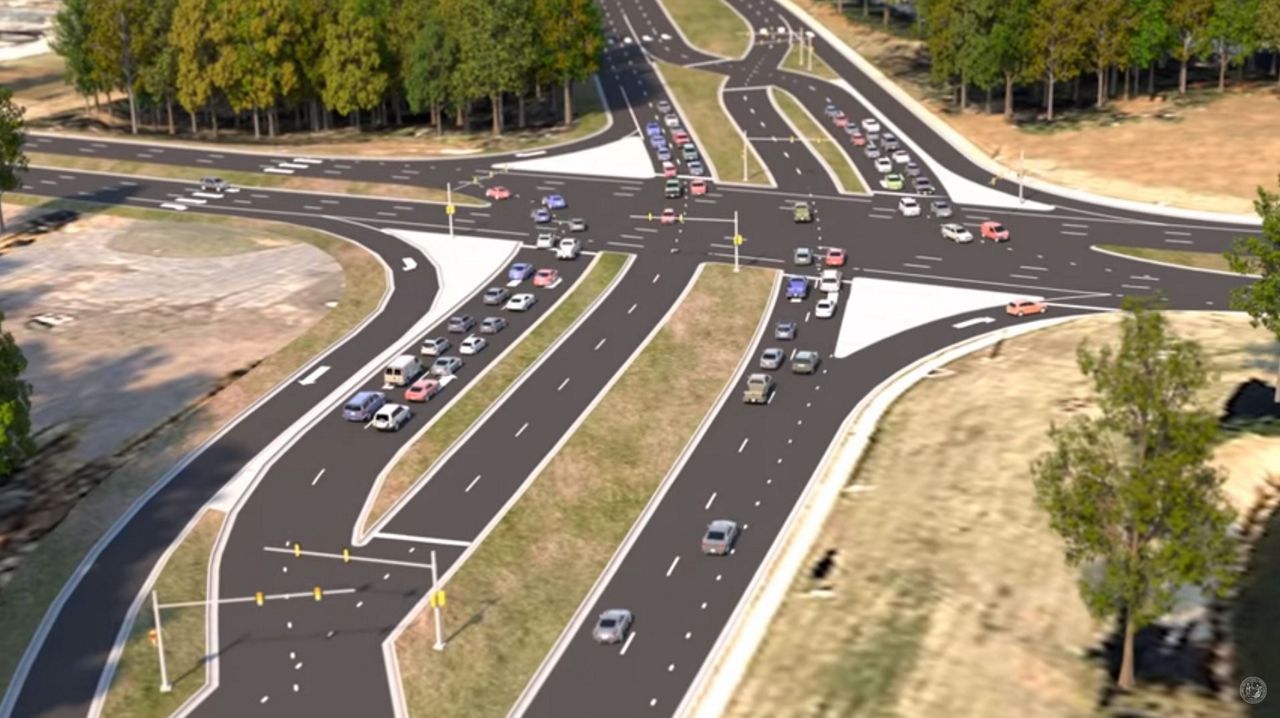
Charlotte Gets State's First Continuous Flow Intersection
A continuous flow intersection (sometimes referred to as a displaced left-turn intersection) improves traffic flow and reduces delays by allowing left turns and through movements of one or both approaches to occur at the same time. Using a Continuous Flow Intersection Pedestrians, Heads-Up!

Are You Ready For Continuous Flow Intersections on Eagle Road?
212.1 General This chapter provides design criteria and guidance for the geometric layout of at-grade conventional intersections. Conventional intersections include, 3-leg (T), 4-leg, and Multi- leg (5 or more legs). Multi-leg conventional intersections should be avoided.
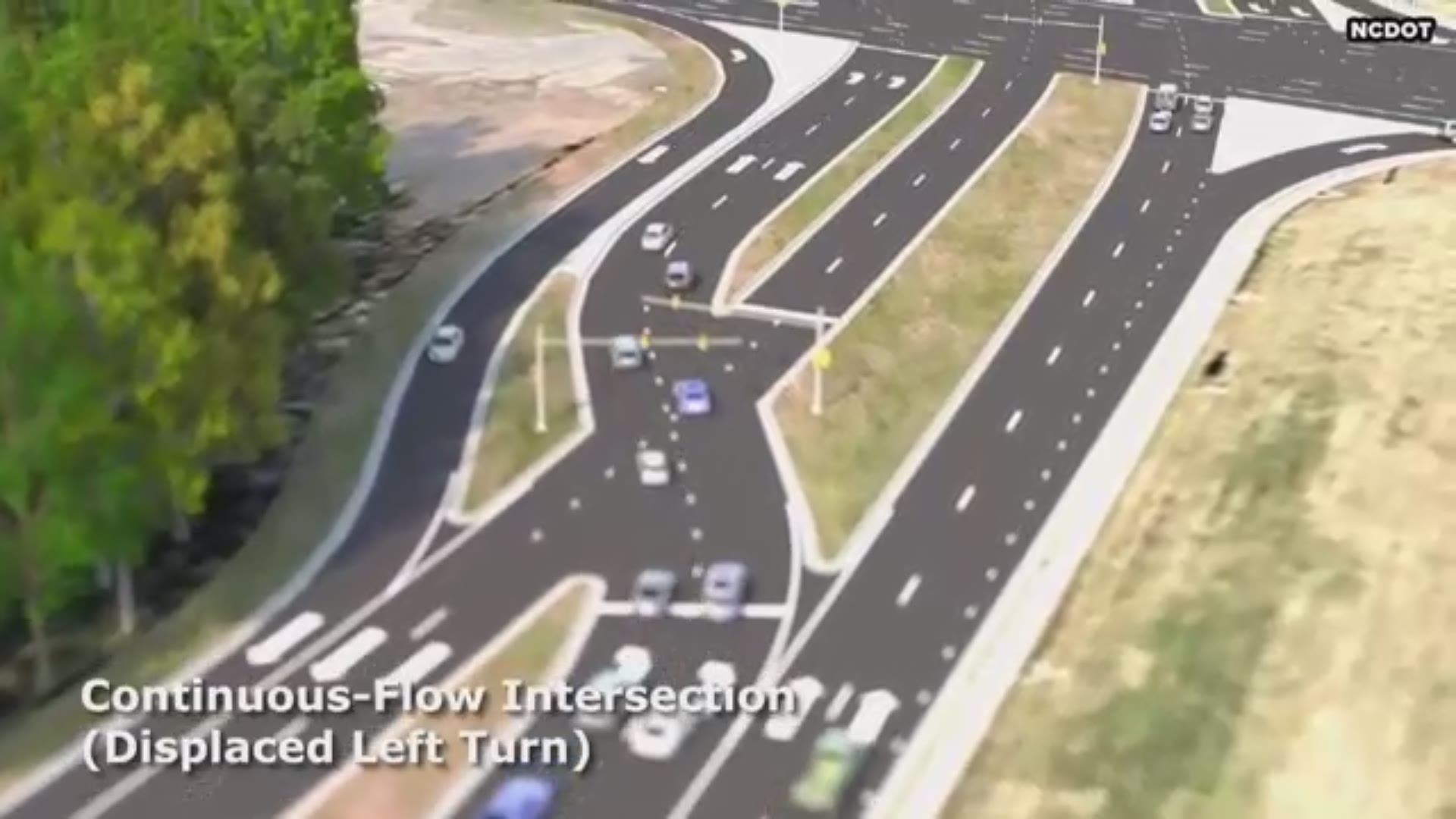
What is a Continuous Flow Intersection? Here's How It Works
A continuous flow intersection, or CFI, is an innovative intersection that allows vehicles to travel more efficiently through an intersection. A CFI enhances safety and increases traffic flow through intersections by allowing left-turning traffic and through-traffic to move simultaneously. Here's how.

State's first Continuous Flow Intersection to open in Lee Co.
8 Alternative Intersection Design and Selection Continuous Flow Intersection CFIs (Figure 4) are also known as displaced left turns (DLTs) and crossover displaced left turns. They reduce conflict points at the main intersection by directing left-turning vehicles to crossover at a location upstream of the main intersection. Thus, left-turning.